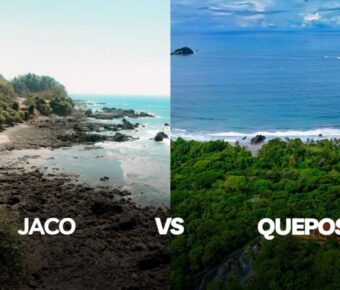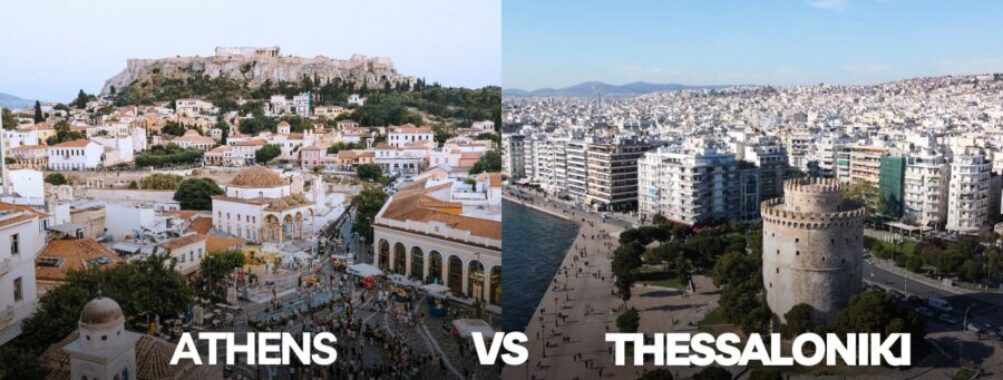
Athens vs Thessaloniki: 5 Key Differences Between Greece’s Iconic Cities in 2025
Choosing between Athens and Thessaloniki is like picking between two beloved siblings – each has a distinct personality that captivates visitors differently. Greece’s two largest cities offer unique experiences that cater to various travel styles and preferences.
Thessaloniki is generally more affordable than Athens, offering excellent food, vibrant nightlife, and a relaxed atmosphere with fewer tourists. The northern city boasts beautiful beaches nearby, a rich cultural heritage, and a youthful energy thanks to its large student population. Many Greeks, even Athenians, praise Thessaloniki’s food scene as superior.
Athens remains iconic with its ancient wonders, broader economic opportunities, and better connections to the Greek islands. The Acropolis and Parthenon stand as testaments to its historical significance. While more expensive and crowded, Athens provides a bustling metropolitan experience many travelers seek when visiting Greece.
Table of Contents
- Geographical and Historical Context
- Location and Landscape
- Historical Foundations
- Population and Urban Development
- Cultural Significance and Lifestyle
- Cultural Heritage
- Lifestyle Comparisons
- Artistic and Educational Hubs
- Economic Prosperity and Opportunities
- Industry and Employment
- Education and Innovation
- Cost of Living
- Tourist Attractions and Landmarks
- Historic Monuments
- Museums and Galleries
- Theatres and Entertainment Venues
- Recreational Areas
- Gastronomy and Cuisine
- Local Delicacies
- Dining Scenes
- Food Markets
- Climate and Environmental Factors
- Seasonal Weather Patterns
- Geographical Impact on Climate
- Transportation and Infrastructure
- Public Transport Systems
- Accessibility and Walkability
- International Connectivity
- Festivals and Nightlife
- Local Festivities
- Nightclubs and Bars
- Cultural Events
- Accommodation and Hospitality
- Hotels and Resorts
- Hostels and Budget Stays
- Guest Experience
- Frequently Asked Questions
- How does the cost of living in Athens compare to that in Thessaloniki for residents and travelers?
- Which cultural and historical experiences set Athens apart from Thessaloniki?
- Can you outline the transportation options for traveling from Athens to Thessaloniki?
- What unique attractions can visitors find in Thessaloniki that are not present in Athens?
- From a traveler’s perspective, how do dining and cuisine options in Athens contrast with those in Thessaloniki?
- Book Your Dream Experience
- More Travel Guides
Geographical and Historical Context

Athens and Thessaloniki are Greece’s two most important cities. Each has distinct geographic settings and rich historical backgrounds that have shaped its development and character over thousands of years.
Location and Landscape

Athens is in the southern part of Greece, in the Attica region. Mountains surround it and open to the Saronic Gulf through its port city, Piraeus.
The city spreads across a basin, with iconic hills like the Acropolis rising prominently from its center. Athens enjoys a typical Mediterranean climate with hot, dry summers and mild, rainy winters.
Thessaloniki, in contrast, is located in northern Greece on the Thermaic Gulf. The city stretches along the coastline with Mount Chortiatis rising behind it, creating a natural amphitheater effect. This northern position gives Thessaloniki slightly cooler temperatures than Athens, especially in winter.
Both cities benefit from coastal locations, but their different positions within Greece create unique landscapes. Athens’ terrain is more rugged and hilly, while Thessaloniki has a more gentle slope from the mountains to its waterfront.
Historical Foundations
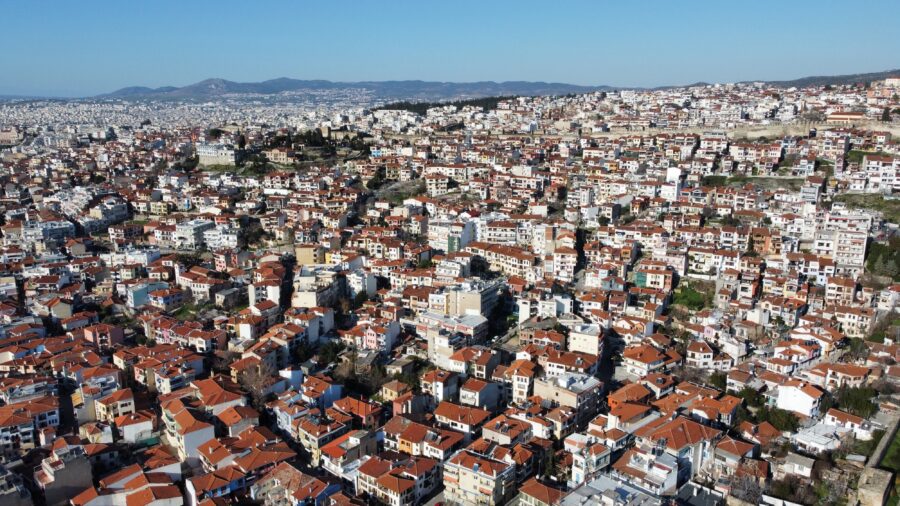
Athens boasts one of the longest urban histories in the world, dating back at least 3,400 years. As the birthplace of democracy and classical civilization, Athens flourished under leaders like Pericles during the 5th century BCE. The architectural wonders of the Acropolis stand as a testament to this golden age.
Thessaloniki has a younger but equally fascinating history. Founded in 316 BCE by King Cassander of Macedon and named for Alexander the Great’s sister, the city later became the capital of the Roman province of Macedonia. Its strategic location made it a vital center in the Byzantine Empire.
Both cities experienced Ottoman rule for centuries before modern Greek independence. Their different historical trajectories have created distinct architectural landscapes and cultural identities that visitors can still explore today.
Population and Urban Development

Athens is Greece’s largest metropolis, with approximately 3.7 million people in its greater urban area—about one-third of its population. This density creates a fast-paced environment, especially in the central districts, while considerable contrasts exist between affluent and working-class neighborhoods.
Thessaloniki is Greece’s second city, with roughly 1 million residents in its metropolitan area. Its compact size makes it more walkable than Athens, with a cohesive urban core along its famous waterfront promenade.
Though in different patterns, both cities have expanded significantly in the 20th century. Athens spread outward in all directions, especially after population exchanges with Turkey in the 1920s and during the economic boom of the 1950s-60s. Thessaloniki’s growth has been more constrained by geography, creating a denser urban fabric.
Cultural Significance and Lifestyle

Athens and Thessaloniki represent two distinct cultural centers in Greece, each with unique character, traditions, and way of life. These cities showcase different aspects of Greek identity through their heritage sites, daily routines, and vibrant artistic communities.
Cultural Heritage
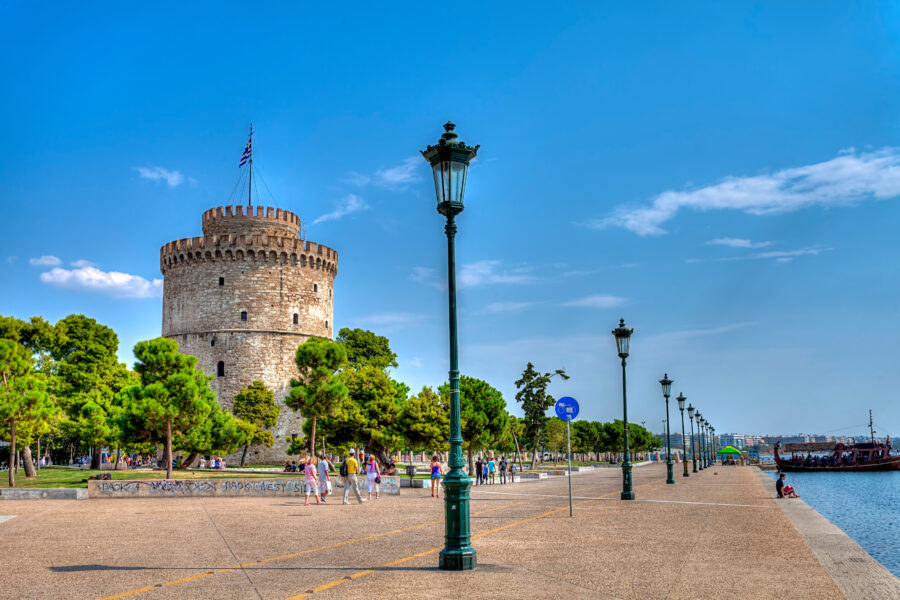
Athens is the cradle of Western civilization, with its iconic Acropolis and Parthenon dominating the skyline. The city breathes ancient history at every corner, with UNESCO World Heritage sites that attract millions of tourists yearly.
While less internationally famous, Thessaloniki boasts an impressive cultural legacy that spans the Hellenistic, Roman, Byzantine, and Ottoman periods. The city features remarkable UNESCO sites like the Paleochristian and Byzantine Monuments.
Many visitors don’t realize that Thessaloniki offers more varied historical attractions than Athens, though perhaps less globally significant. The White Tower, standing proudly along the waterfront, has become the city’s symbol.
Both cities preserve their heritage differently. Athens showcases monumental archaeological sites, while Thessaloniki integrates its historical elements more seamlessly into everyday urban life.
Lifestyle Comparisons

Daily life differs notably between these Greek urban centers. As the political and economic hub of Greece, Athens moves at a faster pace. The capital can feel crowded and hectic, especially in tourist-heavy areas.
Thessaloniki maintains a more relaxed atmosphere with wider roads, better urban planning, and more accessible public spaces. The city’s layout features generous pavements and parks, making it more walkable.
Cost of living varies, too. Athens tends to be more expensive, particularly in central and tourist areas. However, it offers greater variety in accommodation, dining, and entertainment options.
Thessaloniki’s lifestyle is more traditional and has a strong local character. The city is known for its exceptional food scene and vibrant nightlife, which locals claim surpasses Athens in authenticity and value.
Weather patterns also shape lifestyle differences. Athens experiences hotter, drier summers, while Thessaloniki has more seasonal variation with cooler winters.
Artistic and Educational Hubs
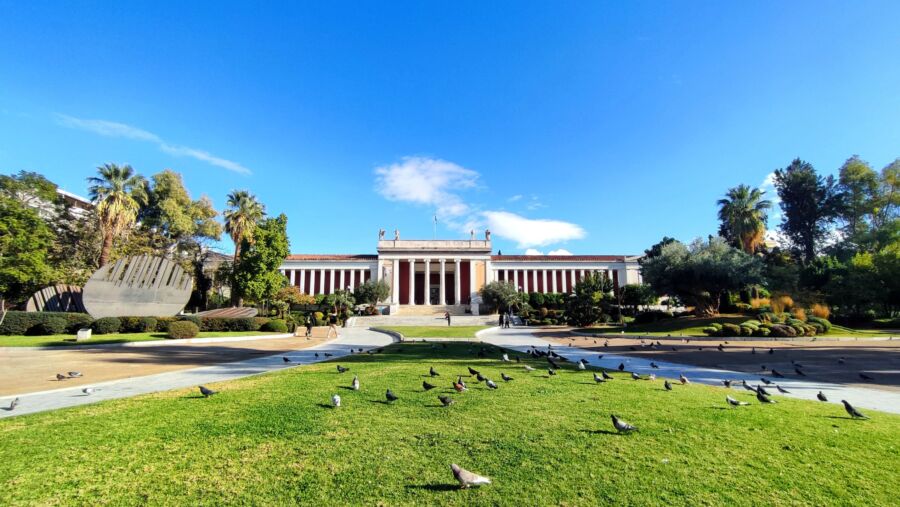
Both cities serve as important cultural centers, but with different emphases. Athens hosts major national institutions like the National Archaeological Museum and the Acropolis Museum, alongside a thriving contemporary art scene.
Thessaloniki is widely recognized as Greece’s artistic heart. The city hosts the renowned Thessaloniki International Film Festival and has a reputation for fostering creative communities. Local art galleries and independent theaters flourish throughout the city.
The educational landscape differs, too. Athens houses the historic National and Kapodistrian University, while Thessaloniki’s Aristotle University is one of southeastern Europe’s most prominent academic institutions.
Thessaloniki’s student population creates a youthful energy that permeates its cafés, bookshops, and public spaces. This academic presence contributes to the city’s reputation for progressive thinking and cultural innovation.
Music and performance traditions vary between the cities, with Thessaloniki particularly known for its rebetiko music heritage and contemporary cultural events that transform public spaces.
Economic Prosperity and Opportunities
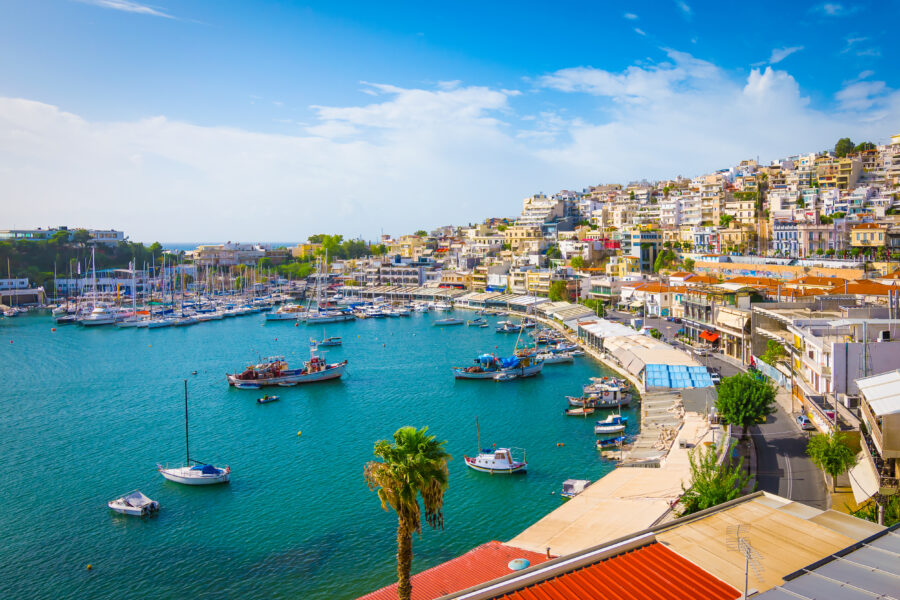
Both Athens and Thessaloniki offer distinct economic landscapes for residents and businesses. Athens boasts a larger job market with strong international sectors, while Thessaloniki is developing as an innovation hub with lower living costs.
Industry and Employment
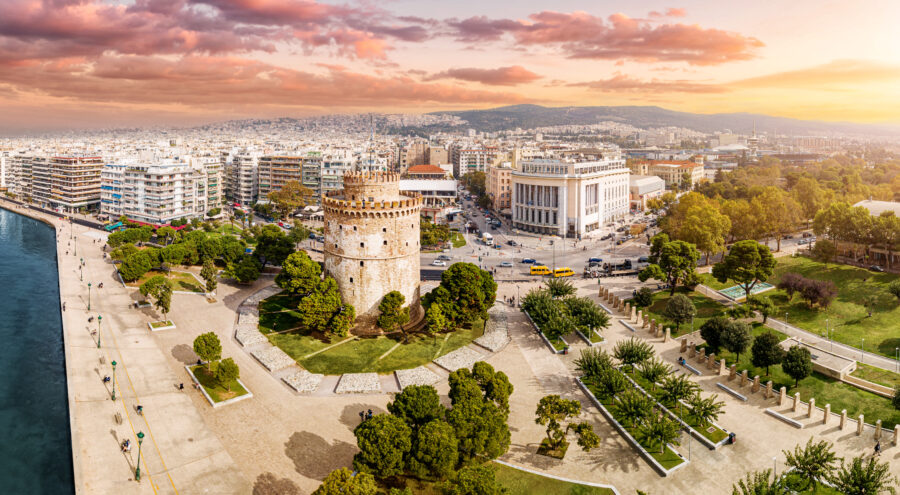
Athens leads in job opportunities, especially in business, finance, and international sectors. As Greece’s capital, it hosts the headquarters of major Greek and multinational companies, creating a robust job market for professionals. Tourism, shipping, and government administration also benefit the city’s economy.
Though smaller, Thessaloniki has its economic strengths. The city is known for its manufacturing, logistics, and food production industries. Its strategic location near the Balkans makes it a regional trade hub.
The unemployment situation has improved in both cities in recent years, though Athens typically offers higher salaries to offset its higher cost of living. Both towns provide multilingual work environments for international professionals, but Athens has more positions requiring English and other foreign languages.
Education and Innovation
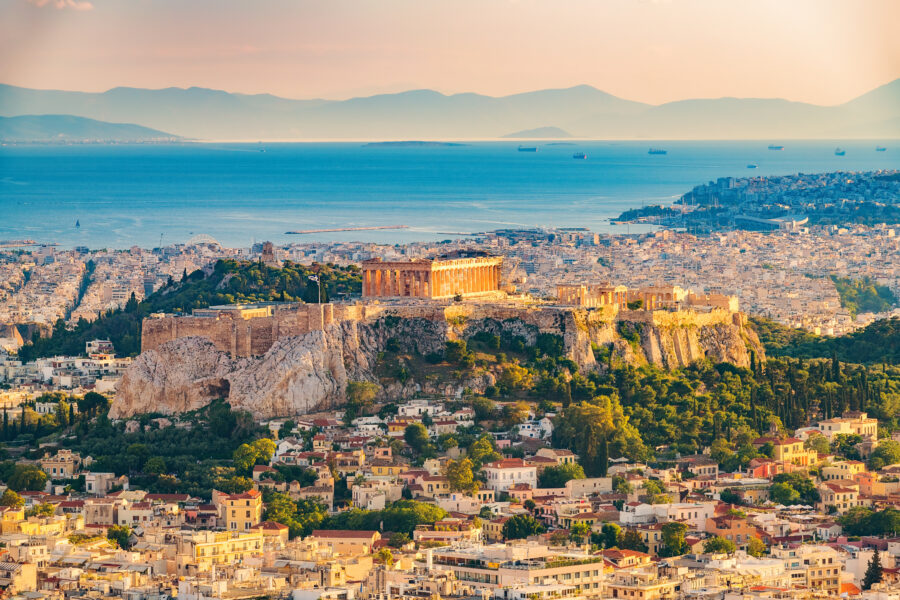
Athens houses several prestigious universities and research institutions that drive innovation. The city’s startup ecosystem has grown significantly, with incubators and tech hubs supporting new ventures.
Thessaloniki is gaining recognition as an education and innovation center. The Aristotle University of Thessaloniki, one of the largest in the Balkans, attracts students from across southeastern Europe. The city has developed a growing startup scene, particularly in technology and creative industries.
Both cities benefit from EU funding for entrepreneurship initiatives. Thessaloniki’s more compact size has allowed for tighter collaboration between universities, businesses, and government, creating what some call a more accessible innovation community compared to Athens’ larger, sometimes more fragmented ecosystem.
Cost of Living
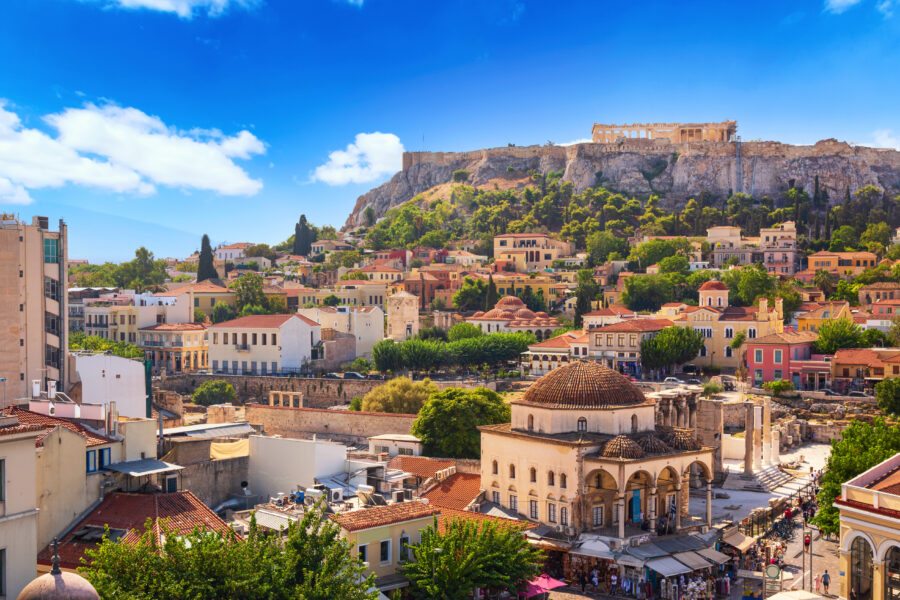
Thessaloniki offers a significantly lower cost of living than Athens. According to search data, rent prices for one-bedroom apartments are approximately 111€ cheaper. This makes Thessaloniki particularly attractive for young professionals and entrepreneurs with limited budgets.
While Athens has higher housing costs, it offers more luxury and high-end options. Everyday expenses like groceries, restaurants, and transportation are slightly higher in Athens.
The financial tradeoff is clear: Athens generally provides higher income potential but with higher living costs. At the same time, Thessaloniki offers a more affordable lifestyle that might compensate for somewhat lower average wages. This financial equation makes Thessaloniki increasingly popular among digital nomads and remote workers seeking a quality of life at reasonable costs.
See Related: Most Famous Villas in Greece for Exclusive Aegean Hideaways
Tourist Attractions and Landmarks
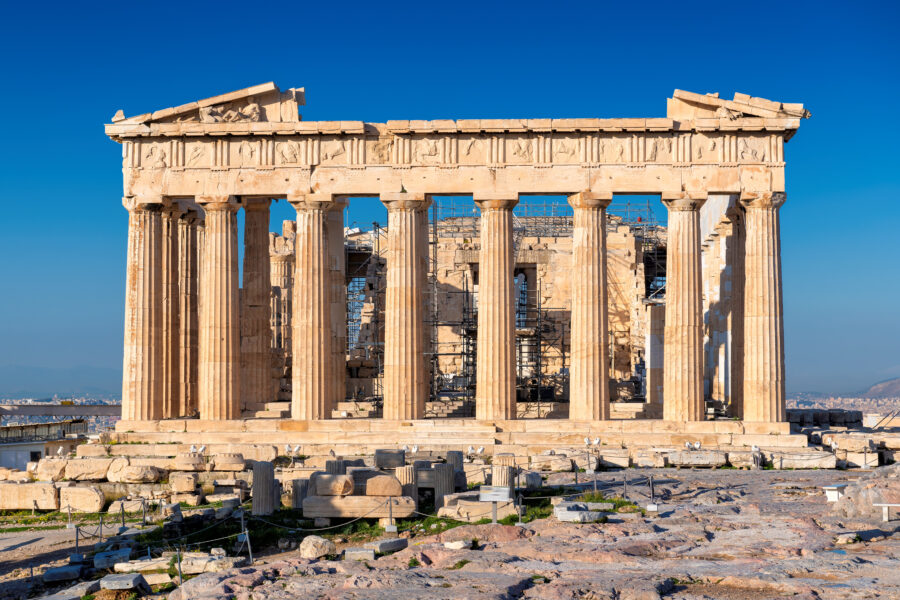
Athens and Thessaloniki offer incredible sights that showcase Greece’s rich history and vibrant culture. Each city has its unique character in terms of monuments, museums, theaters, and recreational spaces.
Historic Monuments
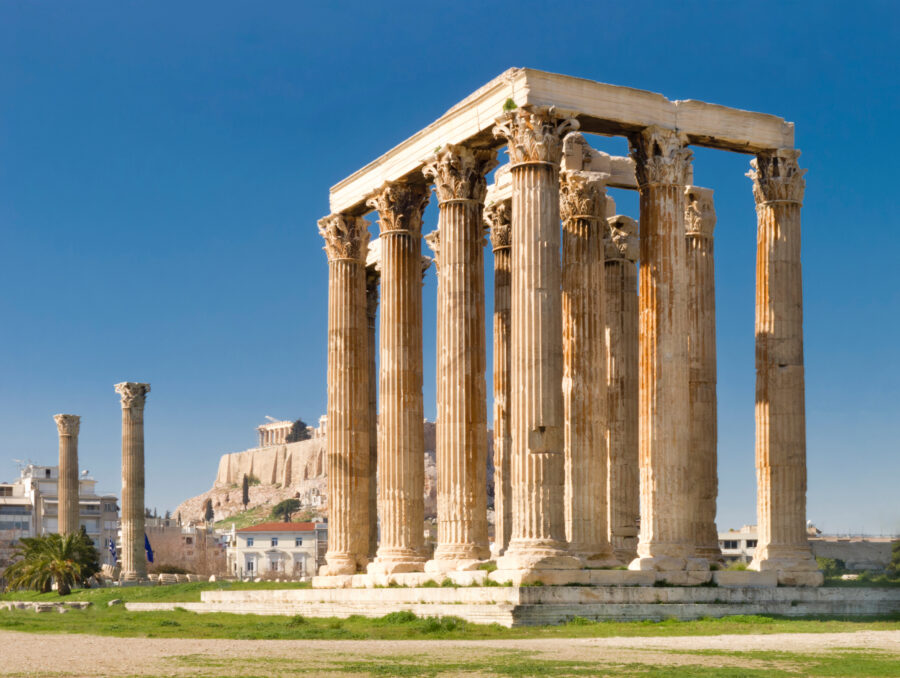
Athens is the clear winner for ancient historical landmarks, with the Acropolis as its crown jewel. This UNESCO World Heritage site includes the iconic Parthenon, Erechtheion, and Temple of Athena Nike. The Ancient Agora, Roman Forum, and Temple of Olympian Zeus are also must-see spots that transport visitors back thousands of years.
Thessaloniki offers a different historical perspective with monuments from multiple eras. The White Tower stands as the city’s symbol along the waterfront.
The Rotunda, Arch of Galerius, and Roman Forum showcase their Roman past. Byzantine churches like Hagia Sophia of Thessaloniki and the Church of Agios Dimitrios feature stunning mosaics and architecture.
One key difference is accessibility. Thessaloniki’s monuments are scattered throughout the city center, making them easy to visit while walking around. Athens requires more planning to see all its ancient sites.
Museums and Galleries
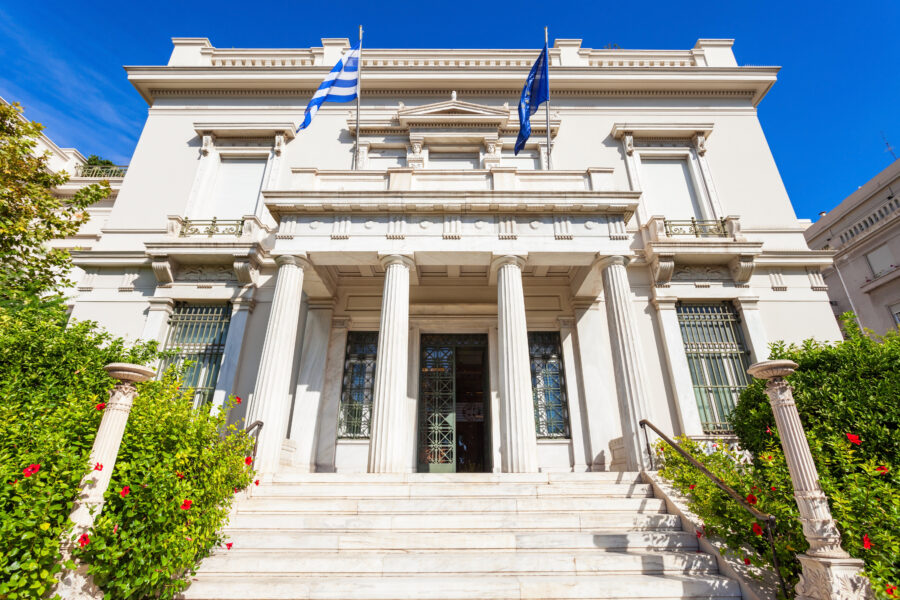
Athens boasts the world-class Acropolis Museum with stunning glass floors revealing excavations below. The National Archaeological Museum houses the world’s finest collection of Greek antiquities. Smaller gems include the Benaki Museum and the Museum of Cycladic Art.
Thessaloniki also shines in the museum department. The Archaeological Museum of Thessaloniki displays treasures from Macedonia, including artifacts from the tomb of Philip II. The Museum of Byzantine Culture offers insight into the city’s medieval past.
For art lovers, Thessaloniki has a more contemporary edge. The State Museum of Contemporary Art and MOMus-Experimental Center for the Arts showcase modern works.
Athens counters with the National Museum of Contemporary Art and numerous galleries in neighborhoods like Psiri and Metaxourgeio. Thessaloniki’s museums tend to be less crowded than Athens’, offering a more relaxed viewing experience.
Theatres and Entertainment Venues
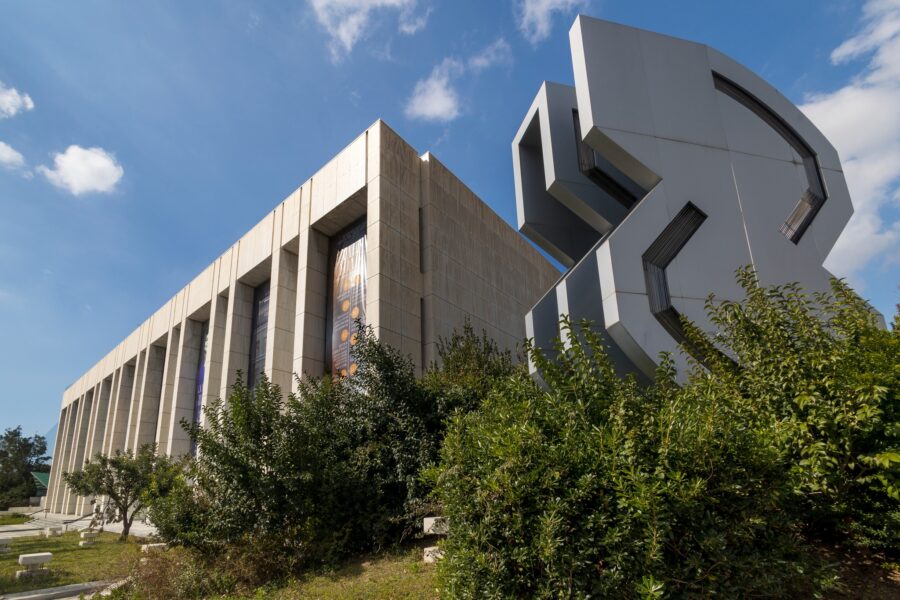
Athens offers the magnificent Odeon of Herodes Atticus, an ancient stone theater still used for performances under the stars. The Athens Concert Hall (Megaron) hosts world-class musical events, while smaller venues like Technopolis host concerts and cultural festivals yearly.
Thessaloniki’s entertainment scene is equally vibrant but more compact. The Royal Theater and the Thessaloniki Concert Hall hold classical and contemporary performances. The city is famous for its International Film Festival, which transforms various venues into screening locations each November.
Both cities have thriving nightlife districts. Athens’ Gazi area is packed with clubs and bars.
Thessaloniki’s Ladadika district offers a more walkable concentration of entertainment options, with many venues featuring live Greek music. Street performances are common in both cities, with Thessaloniki’s seaside promenade often hosting impromptu concerts and shows.
Recreational Areas

Athens offers lovely green spaces like the National Garden in the city center. Mount Lycabettus provides fantastic panoramic views after a hike or cable car ride. The coastal areas of Glyfada, Vouliagmeni, and Faliro offer beaches and seaside walks just a short drive from downtown.
Thessaloniki’s most significant recreational asset is its 5km waterfront promenade. This recently renovated stretch lets visitors stroll, cycle, or jog with views of Mount Olympus on clear days. The Seich Sou Forest on the city’s eastern edge provides hiking trails and cool shade.
For beach lovers, Thessaloniki requires a short trip to reach the beautiful beaches of the Halkidiki peninsula, while Athens has beaches within city limits. Both cities offer excellent parks—the Aristotle University campus in Thessaloniki functions as a green oasis, while Filopappou Hill in Athens provides quiet paths with archaeological significance.
Outdoor cafes are plentiful in both cities, with Thessaloniki having a higher concentration in its center.
Gastronomy and Cuisine

Food culture is one of the most striking differences between Athens and Thessaloniki. These two Greek cities offer distinctive culinary experiences that reflect their unique histories and local traditions.
Local Delicacies

Thessaloniki proudly holds the title of Greece’s foodie capital, with dishes showing strong influences from Asia Minor, the Balkans, and the city’s Jewish heritage. The bougatsa (cream-filled pastry) here is legendary – lighter and creamier than other versions. Don’t miss koulouri Thessalonikis, ring-shaped bread covered in sesame seeds, perfect for breakfast on the go.
Athens has its specialties, too. The city calls souvlaki “Kalamaki” and serves it differently than in northern Greece.
Athenian tavernas often focus on dishes from the island and southern traditions. Athens’s seafood tends to be exceptional, especially in the coastal Piraeus area. Both cities claim superiority in their respective signature dishes, but Thessalonians tend to be more passionate about their food heritage.
Dining Scenes
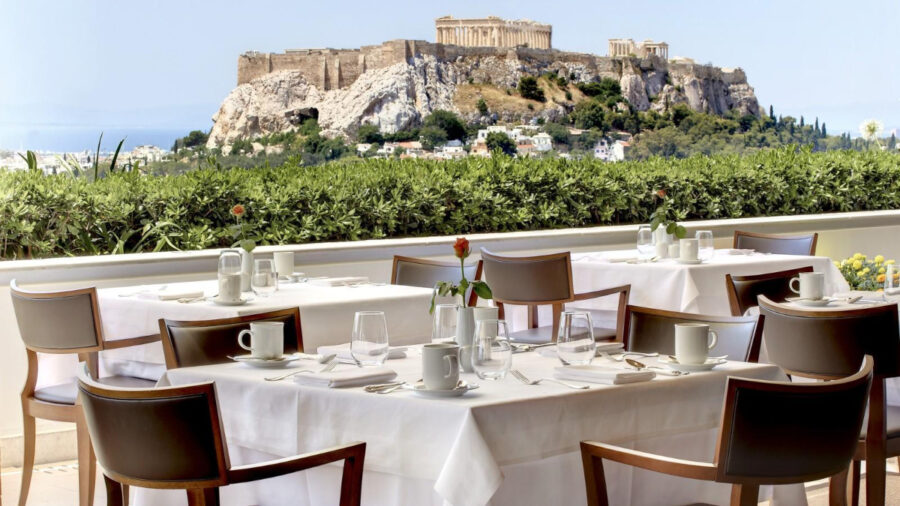
Thessaloniki embraces a more relaxed dining culture. Locals love long, leisurely meals, and the city is packed with traditional tavernas where people gather for hours over meze (small plates) and tsipouro (a strong spirit). The city’s compact center means you can easily walk between different dining spots.
Athens offers more diversity in its restaurant scene, from street food to high-end establishments. The capital has embraced international cuisine more readily, with fusion restaurants and global food trends. However, many Athenians prefer quick dining options due to the faster pace of life.
Prices also differ significantly. Thessaloniki is generally cheaper for dining out, with better value for comparable quality. This makes extended food exploration more accessible for travelers on a budget.
Food Markets
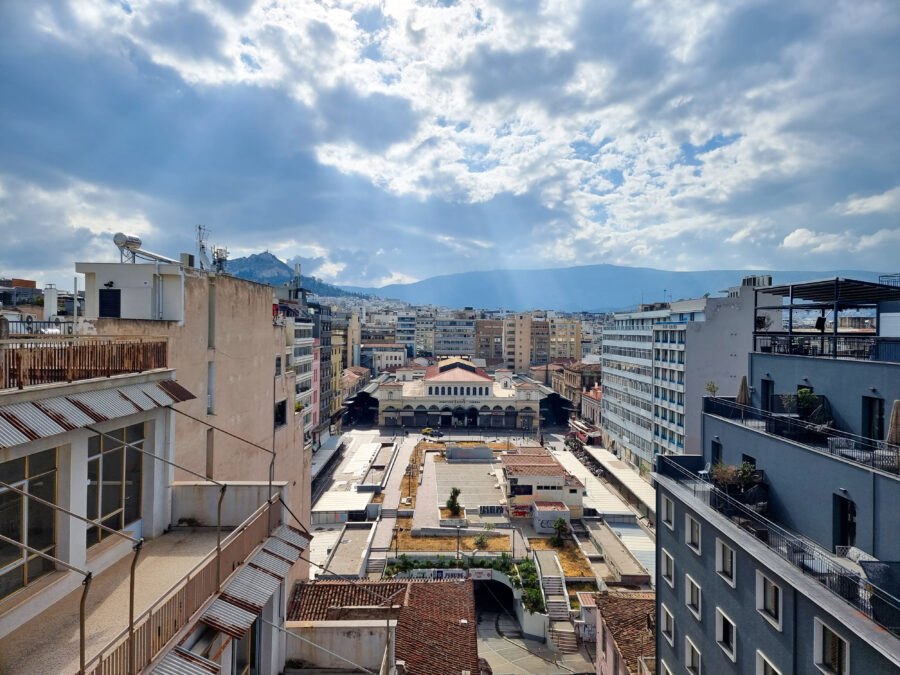
The Modiano and Kapani markets in Thessaloniki showcase the city’s obsession with fresh ingredients. Locals shop daily for produce, spices, and regional specialties in these bustling spaces. Small food stalls inside offer the chance to sample authentic dishes made with ingredients from neighboring vendors.
Athens’ Central Market (Varvakeios Agora) is larger and more hectic. The meat section alone is worth visiting for its theatrical atmosphere. Nearby, you’ll find spice merchants and olive vendors with products from across Greece.
Food markets in both cities operate primarily in the mornings, with many stalls closing after lunch. Thessaloniki’s markets feel more approachable and intimate, while Athens offers greater variety. For serious food lovers, visiting these markets provides insight into the ingredients that make Greek cuisine so special.
Climate and Environmental Factors
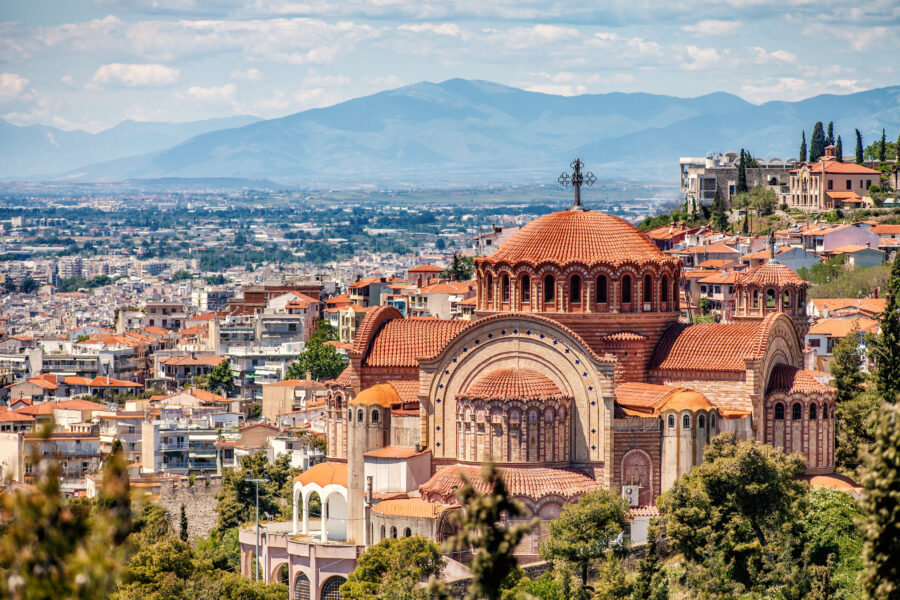
Athens and Thessaloniki face significant climate challenges affecting daily life and tourism. These two major Greek cities share Mediterranean weather patterns but experience notable differences due to their unique geographical positions.
Seasonal Weather Patterns
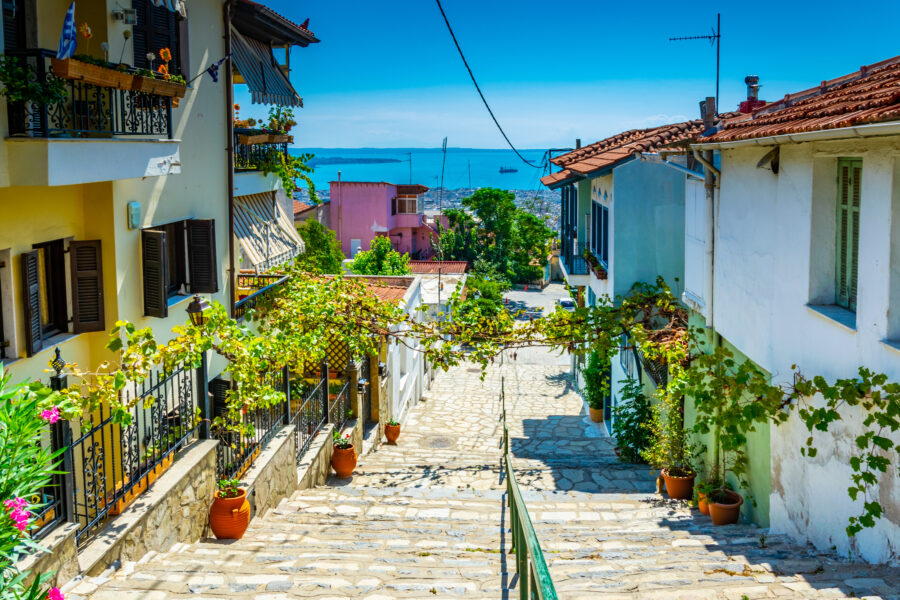
Athens enjoys a classic Mediterranean climate with hot, dry summers and mild, rainy winters. Summer temperatures regularly climb above 35°C (95°F) between June and August, with July typically the hottest month. Heatwaves have become more common in recent years, with temperatures occasionally exceeding 40°C (104°F).
Athens’ winters are generally mild, with average temperatures between 5-15°C (41-59°F). The rainy season runs from October through February, though precipitation amounts remain relatively low compared to northern Europe.
Thessaloniki experiences slightly cooler temperatures year-round. Summer highs typically reach 32-35°C (90-95°F), offering more comfort than Athens during peak tourist season.
Winters are cooler and wetter in Thessaloniki, with occasional snowfall rarely occurring in Athens. Both cities operate on Eastern European Time (GMT+2), but during summer months, daylight saving time brings them to GMT+3.
Geographical Impact on Climate
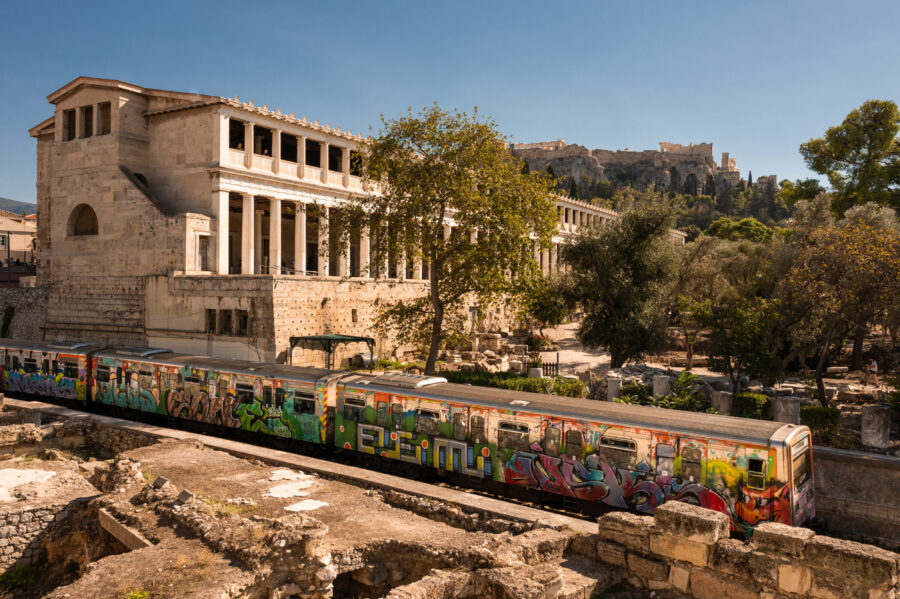
Athens is surrounded by mountains (Hymettus, Penteli, Parnitha, and Aigaleo), which can trap air pollution and heat, creating an urban heat island effect. The nearby Saronic Gulf provides some cooling sea breezes but doesn’t fully offset the city’s heat retention.
This geographical configuration contributes to Athens’ air quality issues. The metropolitan area of Attica frequently experiences pollution problems, especially during summer heat waves when air circulation decreases.
Thessaloniki’s position on the Thermaic Gulf offers more consistent sea breezes that help moderate temperatures. The city is backed by mountains to the north and east, but its more open setting allows for better air circulation than Athens.
Both cities face increasing challenges from climate change. Studies show rising temperatures will likely increase the number of extremely hot days, particularly in urban centers like Athens and Thessaloniki.
Transportation and Infrastructure

Athens and Thessaloniki have unique transportation systems reflecting their different urban layouts and populations. The two largest Greek cities have seen significant infrastructure improvements in recent years, though they still face distinct challenges in moving residents and visitors efficiently.
Public Transport Systems

Athens boasts a more extensive public transportation network than Thessaloniki. The capital city offers a metro system with three lines, trams, suburban railways, buses, and trolleybuses. This comprehensive system helps manage the city’s larger population and sprawling urban area.
Thessaloniki, in contrast, relies primarily on buses for public transport. The city has been working on a metro system for years, but the project has faced delays. Despite lacking underground transport, Thessaloniki’s bus system is generally efficient for moving around the more compact city center.
Travel time between Athens and Thessaloniki has improved significantly, with intercity buses taking about 5 hours. These buses offer a scenic route through the Greek countryside. The train connection between the two cities has also been modernized, though buses remain the more popular option.
Accessibility and Walkability
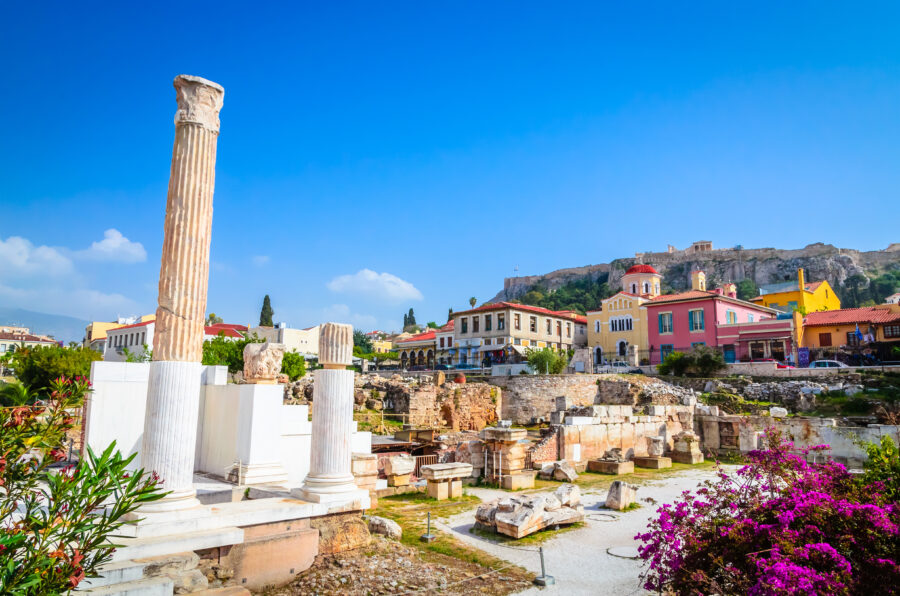
Thessaloniki shines when it comes to walkability. Its compact city center makes it easier to explore on foot, with many attractions within walking distance of each other. The beautiful seaside promenade (Paralia) stretches for kilometers, offering pedestrians scenic views and car-free paths.
Due to its size and hilly terrain, Athens presents more pedestrian challenges. However, significant improvements have been made recently, especially in central areas like Plaka and important archaeological sites. Creating pedestrian zones has enhanced the walking experience in key tourist areas.
Both cities struggle with sidewalk accessibility issues. Parked cars often block walkways, and maintenance can be inconsistent. Thessaloniki generally offers a more relaxed walking experience due to its smaller size and flatter landscape compared to Athens.
International Connectivity
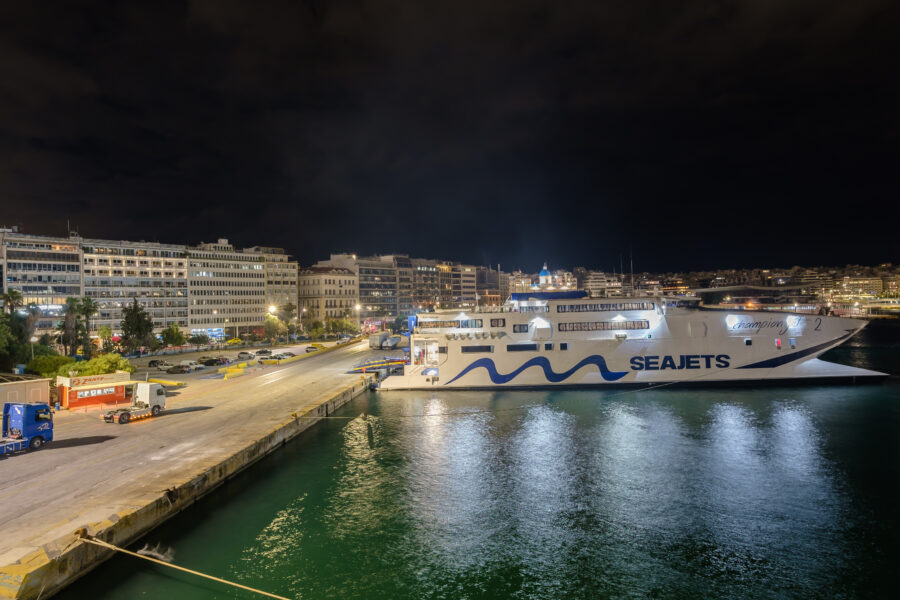
Athens is the clear winner for international transportation connections. Athens International Airport serves as Greece’s main gateway, offering flights to destinations worldwide. The port of Piraeus, just outside Athens, is one of the largest passenger ports in Europe, with ferry connections to numerous Greek islands and international destinations.
Thessaloniki’s international airport has fewer routes and frequencies than Athens’. The city’s port primarily serves regional connections rather than international ones. However, Thessaloniki’s proximity to Balkan countries gives it stronger land connections to neighboring nations like Bulgaria, North Macedonia, and Albania.
Athens typically offers more convenient international connections for tourists planning multi-country trips, while Thessaloniki provides easier access to Balkan destinations. Both cities serve as transportation hubs for their respective regions.
See Related: Top Luxury Resorts in Greece: Unforgettable Mediterranean Escapes Await
Festivals and Nightlife
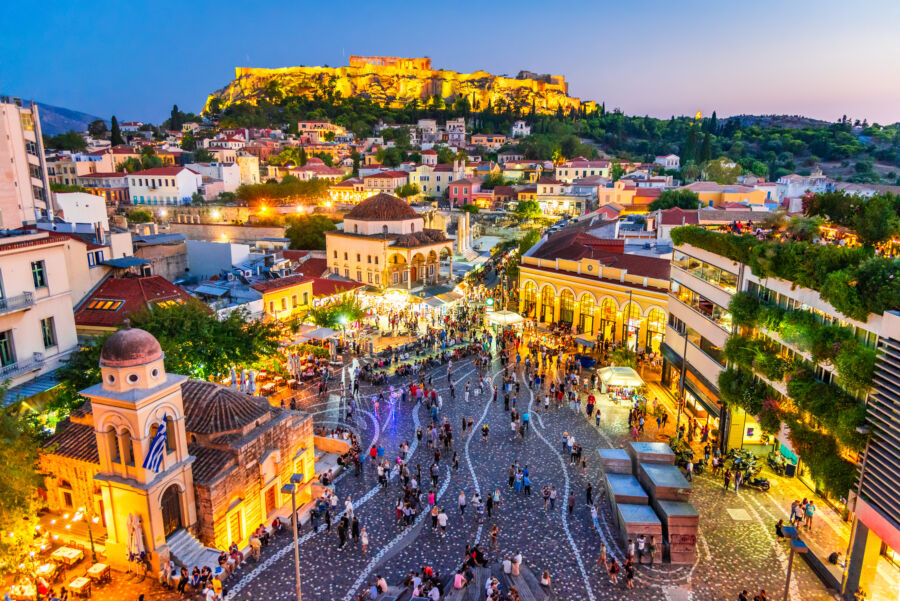
Athens and Thessaloniki offer amazing nightlife scenes and festival experiences, but with distinctly different vibes. Athens brings metropolitan energy while Thessaloniki provides a more relaxed yet vibrant atmosphere influenced by its university population and coastal setting.
Local Festivities
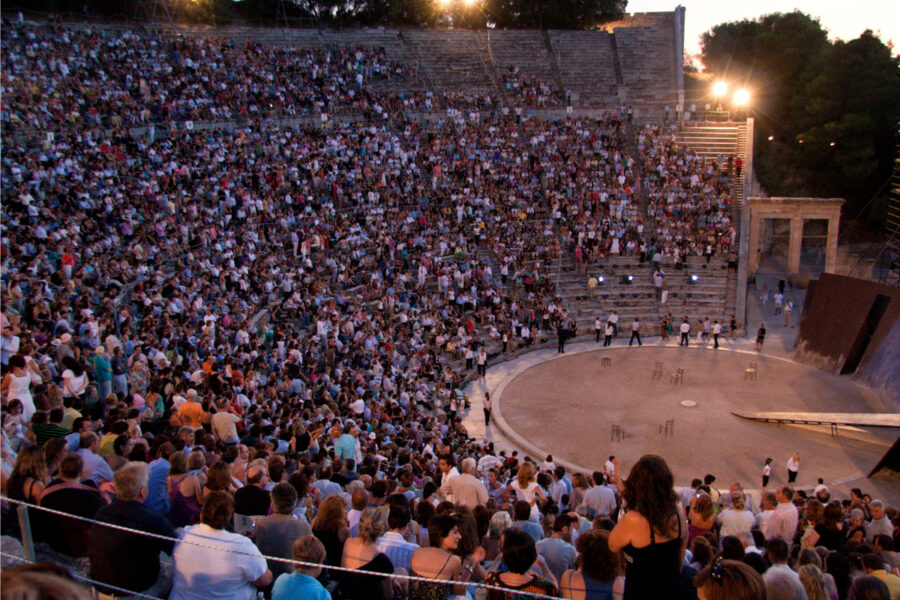
Thessaloniki’s biggest celebration is the Dimitria Festival, a cultural event honoring the city’s patron saint, Dimitrios. It runs from September to October and features concerts, exhibitions, and performances. The town also hosts a fantastic International Film Festival every November, drawing film enthusiasts worldwide.
Athens counters with the Athens Epidaurus Festival in summer, featuring performances at ancient venues like the Odeon of Herodes Atticus. Before Lent, the city’s Apokries (Carnival) celebrations were chaotic, with costumes and street parties. Both cities celebrate Greek Independence Day (March 25) and Oxi Day (October 28) with military parades, but Thessaloniki’s waterfront location makes these events particularly picturesque.
Nightclubs and Bars
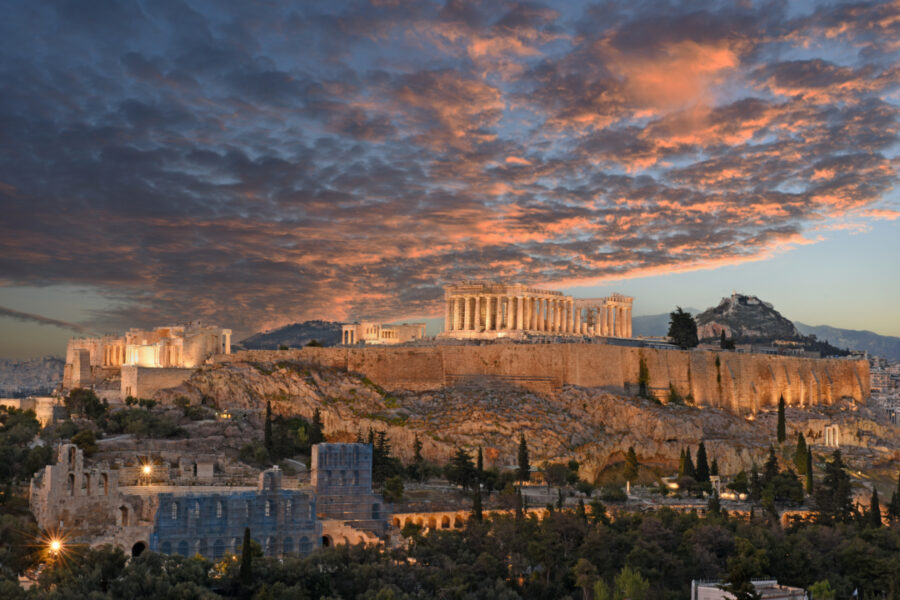
Thessaloniki wins big points for its beach bars and waterfront clubs. The city’s relaxed vibe makes for a more laid-back nightlife experience that locals and visitors adore. Ladadika and Valaoritou districts buzz with energy as university students fill the streets after midnight.
Athens offers more diversity in nightlife options, from upscale clubs in Kolonaki to alternative scenes in Psirri and Gazi. The capital’s nightlife starts later (around midnight) and continues until sunrise, with some clubs not hitting peak hours until 2-3 AM!
Drink prices are slightly lower in Thessaloniki, and the bar-hopping culture feels more accessible. Athens clubs sometimes have stricter door policies and higher cover charges, but deliver bigger international DJs and elaborate production values.
Cultural Events
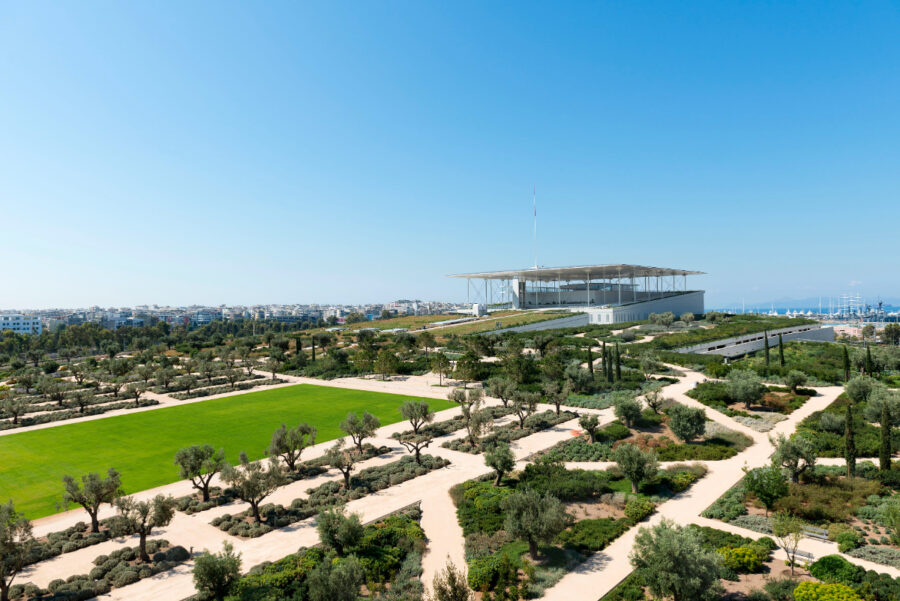
Athens dominates with prominent cultural institutions hosting events year-round. The Athens Concert Hall, Onassis Cultural Centre, and Stavros Niarchos Foundation Cultural Center offer world-class performances spanning classical to contemporary arts.
Thessaloniki counters with excellent museums hosting rotating exhibitions. The city’s International Fair each September brings cultural programs alongside commercial exhibitions. The Street Mode Festival showcases urban culture with street art, skateboarding, and music.
Both cities feature outdoor summer cinema experiences, a beloved Greek tradition. Athens offers more options, but Thessaloniki’s waterfront cinemas provide an unbeatable ambiance. Athens hosts a major book fair each May for bookworms, while Thessaloniki’s International Book Fair in November attracts literary enthusiasts from southeastern Europe.
Accommodation and Hospitality
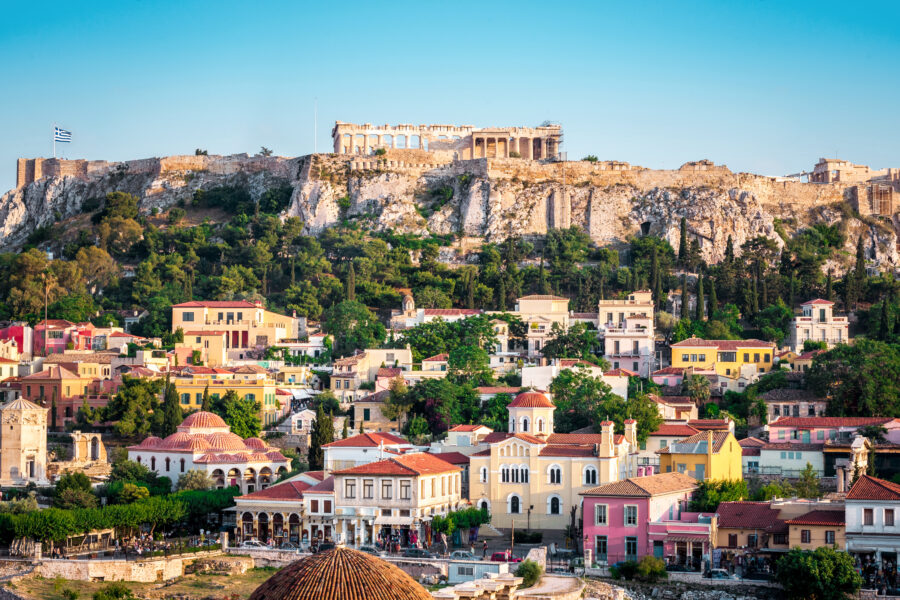
When choosing between Athens and Thessaloniki, your accommodation experience can make or break your stay. Both cities offer distinctive lodging options that cater to different budgets and preferences, with noticeable differences in price points and hospitality styles.
Hotels and Resorts
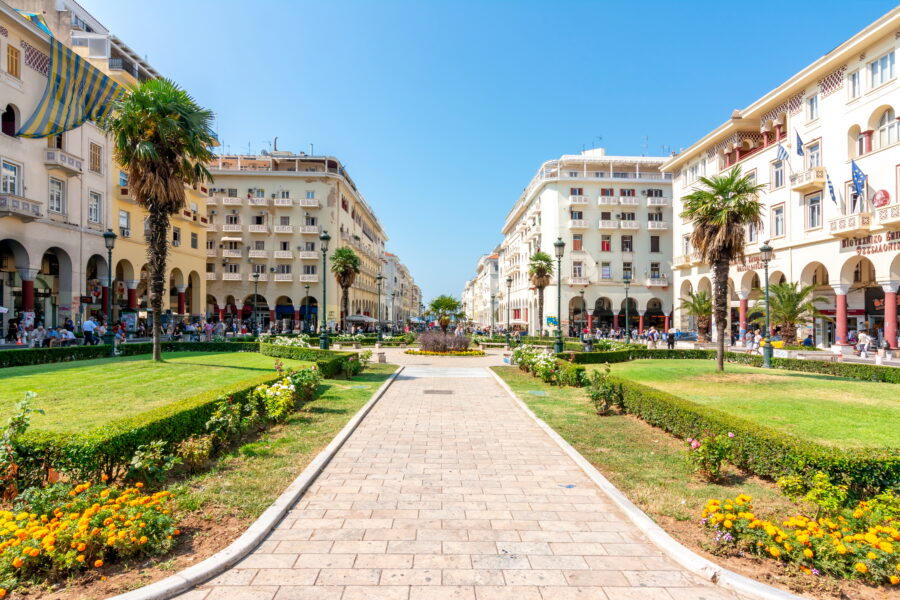
Athens boasts a broader variety of high-end hotels and international chains, particularly around Syntagma Square and the Acropolis area. Luxury options like the Grande Bretagne and modern boutique hotels are scattered throughout trendy neighborhoods like Kolonaki and Psiri. Prices tend to run higher here, especially during peak tourist season (May-September).
Thessaloniki offers more bang for your buck with generally lower rates even for upscale accommodations. The city center hotels along Tsimiski Street and near Aristotelous Square provide excellent value. Many properties have been renovated recently, combining historical charm with modern amenities.
Both cities feature seaside resorts – Athens along the Riviera stretching to Sounio, while Thessaloniki has beachfront properties along the Thermaikos Gulf. Seaside accommodations in Thessaloniki typically cost 15-30% less than comparable Athens properties.
Hostels and Budget Stays
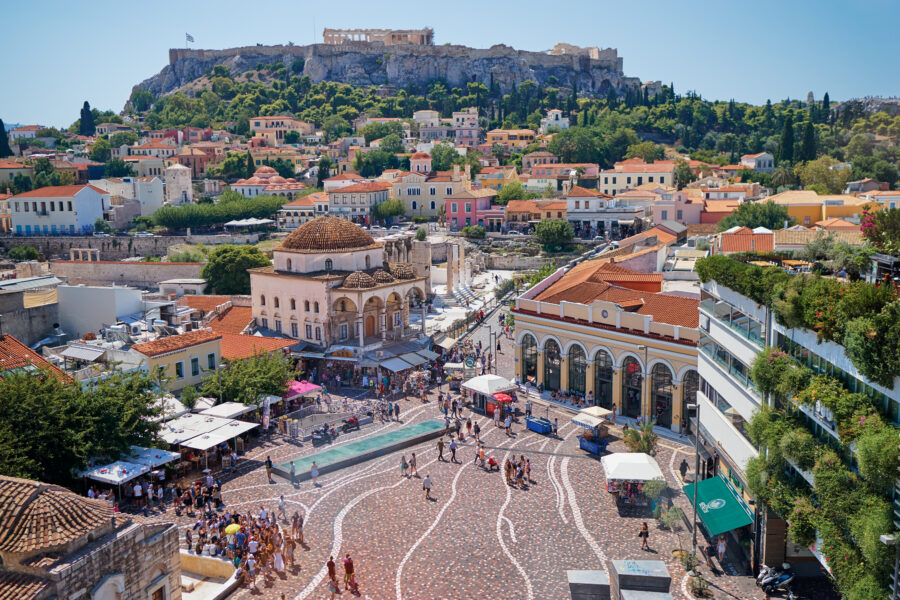
Budget travelers will appreciate Thessaloniki’s student-friendly atmosphere, which translates to more affordable hostels and guesthouses. The city’s compact nature means even budget accommodations tend to be centrally located.
Athens has a larger selection of hostels, particularly around Monastiraki and Psiri neighborhoods. Many offer rooftop terraces with Acropolis views, though you’ll pay a premium for this perk. Private rooms in Athenian hostels typically start around €40-50.
Both cities have embraced apartment rentals and Airbnb options. Thessaloniki’s rental market offers better value overall, with complete apartments available for the price of a modest hotel room in Athens. Budget accommodations in both cities fill quickly during festivals and events.
Guest Experience
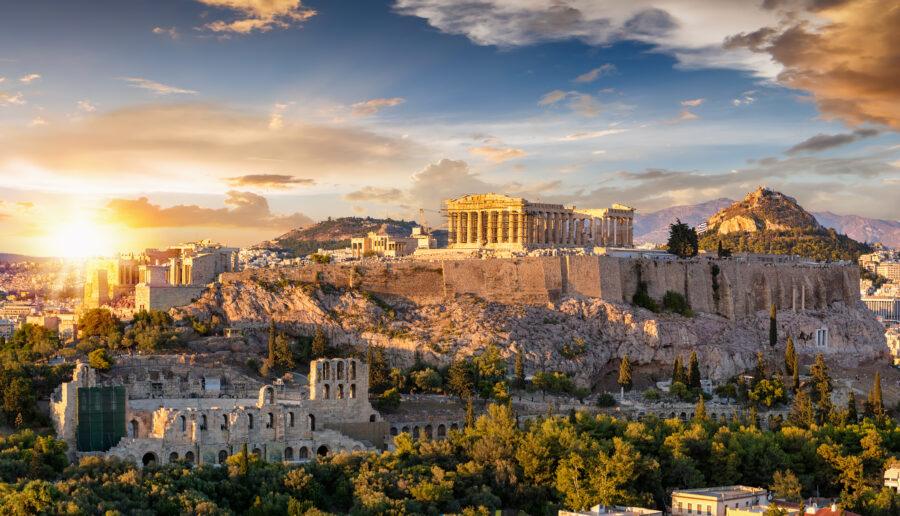
Thessaloniki shines when it comes to hospitality. The more relaxed northern Greek attitude creates a welcoming atmosphere where staff often go above and beyond. Many visitors report being treated like family, receiving local recommendations, and sometimes even homemade treats.
Athens delivers a more cosmopolitan experience with multilingual staff accustomed to international travelers. Service in top hotels is generally excellent, though some budget properties can feel impersonal during high season when staff are stretched thin.
Both cities pride themselves on philoxenia (Greek hospitality), but Thessaloniki’s smaller size allows for more personalized interactions. Athens accommodations frequently offer impressive amenities and views, while Thessaloniki properties often win guests over with warmth and authenticity.
See Related: Data-Driven Strategies to Optimize Your Greece Vacation (And Save Up to 60%)
Frequently Asked Questions
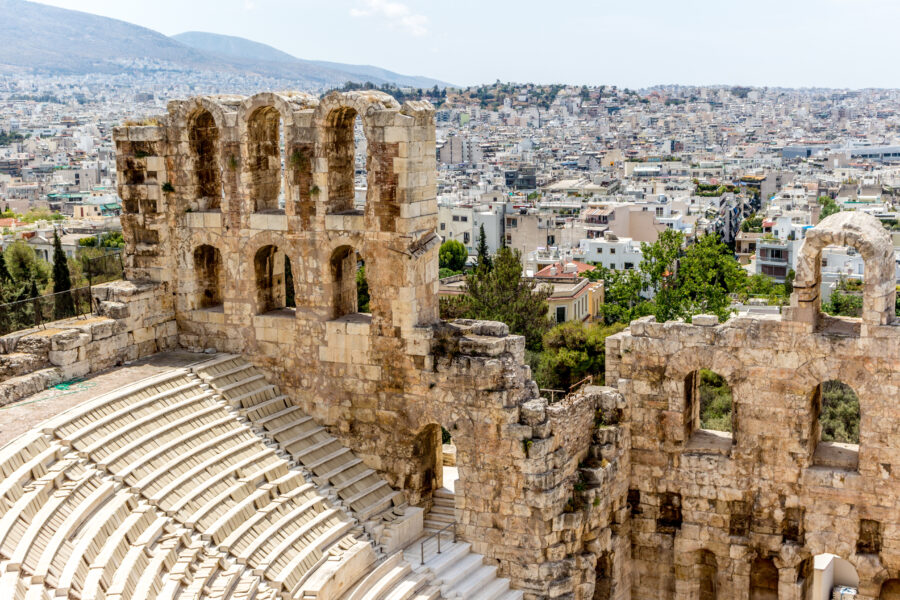
How does the cost of living in Athens compare to that in Thessaloniki for residents and travelers?
Thessaloniki generally offers a more affordable experience than Athens. Accommodation costs in Thessaloniki can be 15-25% lower than comparable options in the capital.
Restaurant prices follow a similar pattern, with meals costing less in Thessaloniki. A dinner for two might cost €30-40 in Thessaloniki compared to €40-60 for a similar experience in Athens.
Transportation costs are also lower in Thessaloniki, with shorter distances requiring fewer taxi rides. However, Athens’ premium status as the capital and major tourist hub drives prices higher across most categories.
Which cultural and historical experiences set Athens apart from Thessaloniki?
Athens stands out for its ancient Greek history. The Acropolis and Parthenon are iconic symbols of classical civilization. The city offers numerous museums dedicated to ancient Greece, including the remarkable Acropolis Museum.
Thessaloniki showcases a different historical narrative focused on Byzantine, Ottoman, and Jewish heritage. The White Tower, Rotunda, and Ano Poli (Upper Town) reveal layers of history that are not as prominent in Athens.
Athens hosts more international cultural events and exhibitions at venues like the Stavros Niarchos Foundation Cultural Center. Thessaloniki counters with its International Film Festival and a more intimate cultural scene.
Can you outline the transportation options for traveling from Athens to Thessaloniki?
The fastest option is flying, with multiple daily flights taking about 55 minutes. Airlines like Aegean, Olympic, and sometimes budget carriers offer this service year-round.
The newer high-speed trains connect the two cities, taking 4-5 hours. They offer scenic views of the Greek countryside and mountains.
Intercity buses provide an economical alternative, taking approximately 6-7 hours, depending on stops. These KTEL buses are comfortable and are a good option for budget travelers.
Driving between the cities takes about 5 hours via the A1 highway. This option offers flexibility to stop at points of interest like Delphi or Mount Olympus.
What unique attractions can visitors find in Thessaloniki that are not present in Athens?
Thessaloniki’s waterfront promenade (Nea Paralia) stretches for 5 kilometers and offers stunning views of the iconic White Tower. Athens has no comparable continuous seafront walkway.
The Ano Poli (Upper Town) features well-preserved Ottoman-era architecture and Byzantine walls. This historic neighborhood offers a different historical atmosphere from anything in Athens.
Modiano Market and Kapani Market provide authentic local shopping experiences that are less touristic than Athens’s markets. The covered markets maintain their original character and primarily serve locals.
Thessaloniki’s vibrant street art scene is considered one of the best in Europe. While Athens has street art too, Thessaloniki’s concentration and quality make it a distinctive feature.
From a traveler’s perspective, how do dining and cuisine options in Athens contrast with those in Thessaloniki?
Thessaloniki is known as Greece’s food capital. Its cuisine features distinctive northern Greek and Pontic influences and more spices and hearty dishes with obvious Ottoman and Balkan influences.
Athens offers more international dining options and fusion restaurants. The capital caters more to international tastes while still providing excellent traditional Greek fare.
Seafood in Athens tends to be more expensive than in Thessaloniki, despite both being coastal cities. Thessaloniki’s proximity to fishing villages often means fresher seafood at better prices.
Street food thrives in both cities, but Thessaloniki is famous for its bougatsa (custard pie) and koulouri (bread rings), while Athens excels with souvlaki stands. The street food scenes reflect each city’s unique culinary identity.

